“Artists realize they need to rely on the diversity of their influences now in order to set themselves apart and progress…”
In the short lifespan of this website, no other project has made the impact on us that ∆AIMON has. Their 2012 mini-album FLATLINER (now available in an expanded CD format from Artoffact) emerged with an intoxicating and fully-formed style that draws evenly from classic industrial, outré art music and the witch house sounds that defined them on their debut release AMEN. With a near constant stream of remixes and a slew of live dates just behind them, we felt it would be a good time to engage husband and wife team Brant Showers and Nancy Lutz in a Q&A and get some answers to our questions regarding the evolution of their sound, the importance of having diverse influences, and how their relationship shapes what ∆AIMON is.
ID:UD: FLATLINER was a big step forward from the style of AMEN, both in terms of the style of the songs and the production, which sounds much richer. What precipitated that change, especially in the relatively short space between the two releases?
∆AIMON: When we first started working on AMEN, witch-house was just beginning to gain exposure and there was only a handful of artists being associated with the scene, so we still hadn’t been exposed to much of anything that had similar elements to what we were creating. Between AMEN and FLATLINER we had been steadily putting together remixes for other artists and collaborating on work that definitely shaped our sound quite a bit. As we made new connections and the scene began to broaden, we started to experiment a lot more with new ideas and sound palates that didn’t necessarily fit within the scope of our first release. Also, a lot of the over-saturation in the production for AMEN was done deliberately for the sake of creating a specific atmosphere. As we developed into more diverse elements within the newer songs, we drifted towards a cleaner production style which in turn also allowed us to bring out more depth in the music itself. So really it was just a matter of being exposed to a lot more creativity within the scene and us purposely building a wider set of styles into our oeuvre for us to build on in our follow-up releases.
ID:UD: Can you name some of the artists and genres which were a part of that broader creative exposure?
∆AIMON: A lot of it started when the Tundra Dubs label first approached us. At the time we were just finishing up the AMEN EP but had already come across Tundra’s very first few releases, so we knew immediately that we wanted to work with them. As a result we ended up being associated with label-mates like FUNERALS, SKELETONKIDS, MASCARA, Ceremonial Dagger and ARCC, which was really exciting. Simultaneously, labels like Pale Noir, Carl Clandestine, and Robot Elephant Records were starting to develop their own amazing styles that we also found extremely inspiring, especially the more textural noise compositions of Mahr (or MARA5 as she was known) and I††. Brant subsequently re-discovered his love for electronic noise/break/hardcore during this time and found himself listening to a lot of his older collection of artists like Bombardier, CDatakill, Scorn, and Somatic Responses, as well as all the DeathChant, Brutal C.H.U.D., and Bloody Fist label releases. This definitely inspired a lot of the sound design and resonant drone atmosphere on the FLATLINER tracks. Otherwise, we’ve always paid keen attention to the more “mainstream” dark electronic musicians like Zola Jesus, CREEP, and recently, Purity Ring just because their music is infectious.
ID:UD: We’ve noticed a lot of the artists originally lumped into the witch house rubric moving beyond the original form of that genre in 2012. Your new material seems to have much more in common with classic industrial and dark ambient than any “classic” witch house bands. Did you consciously make the decision to move in that direction, or was it an organic process?
∆AIMON: The move for us definitely felt organic but it was also certainly conditional to the progression of the witch-house genre. From our perspective, most of the artists that were initially being labeled as witch-house never actually wanted their style defined under a single blanket term. As the scene progressed and more people began to pay attention though, the need for publications and music blogs to label and categorize it quickly gave way to an attributed “stereotypical” sound. What you’re hearing now from the original artists is not necessarily them trying to move away from each other, but instead the rallying against being typecast and limited by a useless genre tag. Stereotyping and narrowed definitions are in direct opposition of the principles from which the scene first began. Artists realize they need to rely on the diversity of their influences now in order to set themselves apart and progress as musicians. Our industrial influences came out in much the same way. We simply wanted to explore the aspects of our background that gave our music its own unique variation. The industrial components just happened to manifest stronger in doing so. That’s not to downplay our interest in old school industrial though, it’s certainly had an absolutely crucial impact on the way we approach sound and composition since day one.
A SCREW (HOLY MONEY) by ∆AIMON
ID:UD: The tension between this very rapid creative diaspora which we’ve seen and the fact that there is some base core of a “scene” at the root of all of this is interesting. How do you think some of the more prevalent signifiers (like unicode names) factor into this?
∆AIMON: In our experience, the “scene” is really banded together by collaborations, net-labels, remix releases and online connections more-so than by any particular identifiers. The surprisingly cohesive and supportive network of artists interacting online in social mediums has been extremely important to retaining a connection between artists that would otherwise have had no real “home”. These groups and forums are often platforms for sharing ideas and works in progress or even organizing releases and live shows. Our visit to SxSW earlier this year was entirely precipitated by discussions between like-minded artists going out of their way to organize and support a dark electronic showcase. That’s just one example but the fact that we have more Facebook fans in London (where we’ve never performed) than we do in our own hometown says a lot for the importance of an online community. I’m sure some of the camaraderie may have been initiated by the vestiges of unicode association, but in our experience the “scene” is almost entirely held together by online communication and shared release associations (remixes, collaborations etc.).
ID:UD: We recall you saying something to the effect of wanting to acknowledge the community and aesthetic which was coalescing at the time through your own use of those signifiers, but without wanting to let it define you. In addition to artists needing a broader pool of influences, do listeners perhaps concurrently need to broaden their listening protocols, and not just insert the hastily assembled stereotype of what a “triangles n’ crosses” band sounds like?
∆AIMON: We certainly chose to use a delta in our name fully realizing it could potentially link us to other artists using similar signifiers. We really liked the concept of names as sigils and wanted to approach our project with a similar intent. We can easily blame it on an interest in Austin Osman Spare though, and especially the way Psychic TV understood this power of archetypal suggestion through the use of their Psychic Cross branding. Point being, it isn’t a new phenomenon and it’s a bit foolish to define artists for following this tradition. We have nothing at all against being included in the witch-house scene (though our connection is a bit more tenuous), but to be dismissed or compared unfairly due to “hastily assembled stereotypes” does a great disservice to the music itself. There’s definitely a reason that artists like Ritualz and GummyBear (amongst many, many more) chose to distance themselves from their affiliation with witch-house…Most notably to avoid the frustrations of being judged by association alone.
Black Cross (Dead When I Found Her REMIX) by ∆AIMON
ID:UD: The rerelease of the album on Artoffact features a lot of remixes and contributions from artists in the industrial scene, and you’ve played a number of shows on bills with industrial bands. Were you surprised by the reception for FLATLINER from that scene?
∆AIMON: To be honest, yes. We never expected such a positive reaction from the industrial scene. San Diego, in particular, has always been very reticent in accepting anything new or outside of its constricted vocabulary. We have a few connections to the scene through DJ friends and such that always supported us but it wasn’t until we played in Los Angeles that we began to see the goth/industrial community understand and show a welcoming for what we are doing. We started receiving just an amazing amount of rewarding feedback that notably reflected our own sentiments about the current condition of music; seems there’s a serious belief in the need for a fresh injection/return of the dark aesthetic that proliferated through industrial music’s early era, to which we absolutely agree.
ID:UD: The special edition of FLATLINER comes with a bone talisman. Can you tell us about the significance of that as it relates to the themes of the record?
∆AIMON: With each release we do, we try to offer special hand-made art pieces for our loyal supporters. We’ve always loved the artifact editions that Throbbing Gristle, Nurse With Wound, Muslimgauze, etc. have released as well as the similarly themed magick connection with fans that Psychic TV cultivated in TOPY. With the CD release of FLATLINER, we really wanted to invoke that tradition. The bone talisman was designed as a fetishized object specifically with the occult aesthetics of the record in mind. Bone is often-times used in magickal practice as a representation of our connection with Earth (its elemental properties as well as Malkuth in its “material” sense). The sulphur/brimstone symbol used for the cover artwork of FLATLINER and painted on the side of the talisman has transitional properties and pairs with the bone as a working from death and physical to the transcendental (or at least represents the process involved). In alchemical traditions, sulfur is the active principle in the Great Work. Its the spirit of life and transmutative fire. Often equated with the infinity cross for everlasting life, the brimstone variation includes numerous symbolism such as the leviathan/ouroboros/snake eating it’s own tail and the infinity lemniscus. The feathers are also a symbolism of this transitional aspiration. Our music project has a lot of foundations on various occult traditions and this particular aspect (transcendent Great Work) is of especially important interest to us.
“At first there was a bit of resentment in seeing important traditions treated like a fashion statement, but it’s hard not to see the overall cultural shift towards mysticism as an important movement.”
ID:UD: There’s been a real surge in the use of mystic imagery within dark electronic music over the last couple years, but it’s unclear how much of that extends beyond just surface level associations. In invoking specific occult traditions, are you looking for specific results or reactions?
∆AIMON: For us, yes. Having been long time followers and students of occult traditions, it has been very interesting to witness the growing rise of occult references in popular culture. At first there was a bit of resentment in seeing important traditions treated like a fashion statement, but it’s hard not to see the overall cultural shift towards mysticism as an important movement. There’s definitely going to be a lot of feigning for the sake of image or wearing satanism as attire, etc., but the paradigm remains favorable for those who do decide to take it further. Our music has very direct associations to specific traditions and they’re based on sincere intent. Most of our interests lie in reaching towards a balance of Light and Dark and all the Anima/Animus Individuation development that goes along with that. This is an important reason why ∆AIMON works as a male/female duo, along with the obvious dynamic inherent in being partners.
ID:UD: Over the last year you’ve done a lot more press, and seem a bit less reticent about revealing information about the project. Was the obfuscation ever deliberate, and was there anything that precipitated that change?
∆AIMON: Yes, we started the project with a conscious decision to remain anonymous and deliver our image through artwork rather than our own personas. As we became deeper involved in the scenes and eventually translated our productions into live shows, etc., the output of our work became more personal and an articulation of those personas. So at a point it just became necessary to open up about our identities. We also feel the dynamic between the two of us is extremely important to the quality of our music and image, so it only heightens our ability to express by making that dynamic clear. We definitely still respect the power of mystery and wish to continue to convey a sense of that, just in a way that allows us to interact and express ourselves more directly.
Second Movement : Temple of the Black Star (∆AIMON REMIX) – Distorted Memory by ∆AIMON
ID:UD: You’ve released a ton of free music in the form of remixes, and numerous mixes you’ve done for other artists have been put out for free or on a pay-what-you-want basis. You’re also working with labels, how do you determine what songs and releases are going to be distributed in each model? Do you ever earmark something for one or the other?
∆AIMON: We’ve always been big proponents for independent and DIY aesthetics so it’s very exciting for us to see the way the music industry has evolved into a much more level playing field. There’s difficulties involved with this as well, including the completely overwhelming stream of self-published artists but the over-all impression is still that this is an extremely exciting time for music. With that in mind, our goal has always been to reach and share our music with as many listeners as possible through the various opportunities and mediums that make themselves available to us. We mostly work with labels when releasing our original compositions simply for the sake of exposure and because they share an understanding of our goals. Labels require a bit of an overhead to sustain and promote; otherwise, with remixes we generally don’t charge unless they’re tied to a physical release. Mixes are usually used for promotion or made available on SoundCloud just for fun. Our fans have enjoyed them in the past so we continue to do them just to share new music. So far the only music we’ve actually charged for have been our two official releases. From an artist perspective those tracks have a sense of value attributed to them that we appreciate.
“The personal dynamic between us as a couple has always had an extremely important role in the studio and on stage so it definitely affects the particular style we’ve fashioned.”
ID:UD: We’re interested in your creative relationship. We know Brant has a studio background, but it’s not entirely clear how the two of you work together to create ∆AIMON’s music. What does your process look like? Does your personal relationship shape the sound of the project?
∆AIMON: Initially our creative process revolved almost entirely around sharing artistic direction between each other. Thankfully we both have experience interpreting and expressing creative management so we’re acutely aware of each others perspectives and desired direction. The more we work together though, the more intuitive it’s become. Nancy has taken a larger interest in the production side as well, thereby alleviating any communication issues while also having a stronger role in the writing process. We always intended the project to be an equal artistic platform so we’re continuously trying out new processes towards that end. Usually a track or project starts with us sharing inspirational artwork or ideas about a theme we want to evoke and then an atmosphere is created for groundwork. If the track is going to be more upbeat then we usually begin with the percussion and bass-line; if we want it to have a more moody atmosphere then we start with the sound design and sample-work and build from there. Throughout the entire process we discuss what works and what doesn’t until we develop something we are both happy with. It all happens faster and easier than it sounds though, as we both share a very similar intent. There’s also a lot of post-production work that Brant usually handles as far as mixing and mastering to give it the particular ∆AIMON sound.
The personal dynamic between us as a couple has always had an extremely important role in the studio and on stage so it definitely affects the particular style we’ve fashioned. Of even greater importance, we feel our relationship is what has given ∆AIMON its sincerity; something we feel is absolutely crucial to the project.
ID:UD: That’s interesting because so much of what ∆AIMON does is based in this very distinct image (for lack of a better term) that’s obviously deliberately constructed, as you talked about above. Is there ever a conflict between that more “designed” aspect of your aesthetic and also maintaining the project as a reflection of your individual creative personas?
∆AIMON: We haven’t encountered any conflicts directly, or at least none that have made themselves obvious to us. With ∆AIMON, we always intended to reflect ourselves honestly and hopefully that comes across in the way we’re perceived. Even if our personae are a bit “designed”, we’ve never presented ourselves as something we aren’t and our deliberately constructed image is based entirely on legitimate interests of ours. In the past we purposely shared less about our personal lives but we weren’t intending to create “characters” or an untrue image, so the more we share about ourselves the more we’re just filling in the gaps of how the project represents us. Obviously our music only touches on specific themes of our personalities, but we hope to impress a very honest representation of how those themes are important to us.
FLATLINER is available on vinyl from Tundra Dubs, digitally on Bandcamp and as an expanded CD from Artoffact.

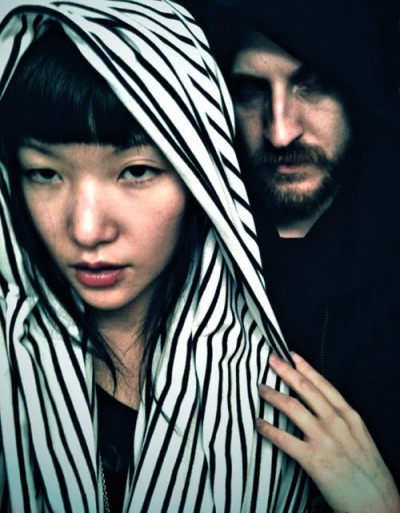


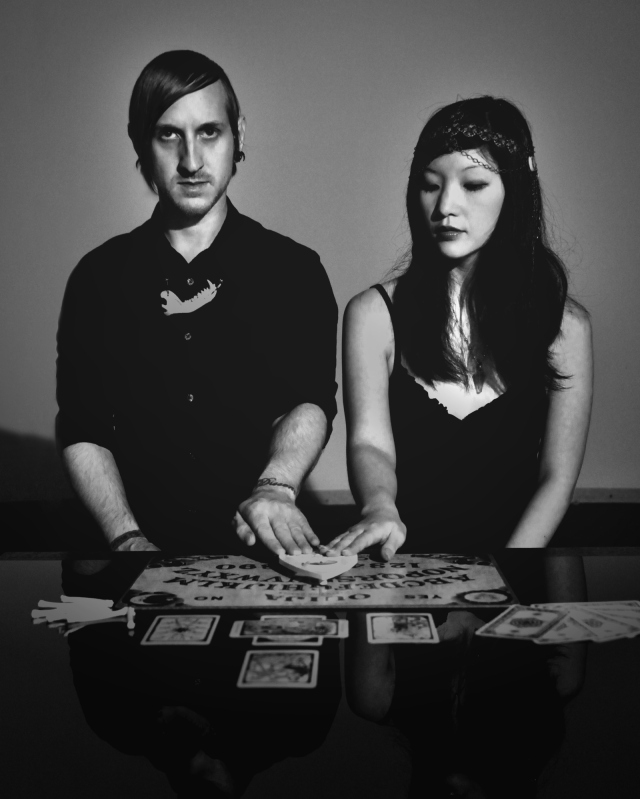
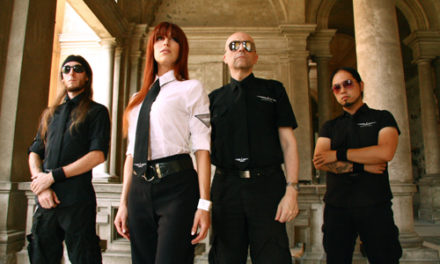
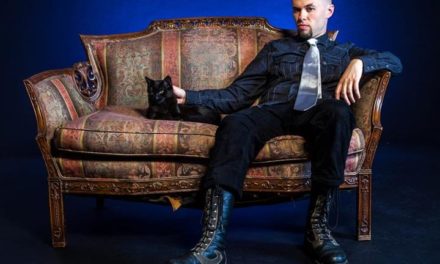

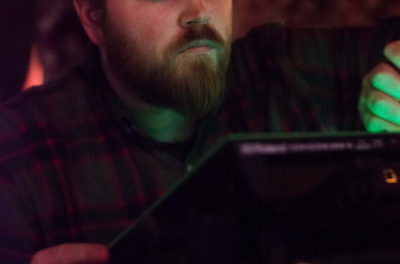
Trackbacks/Pingbacks